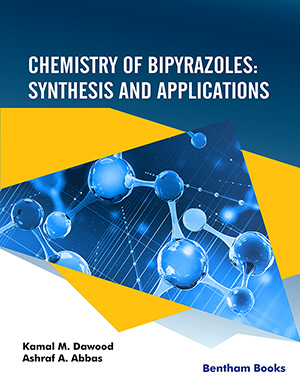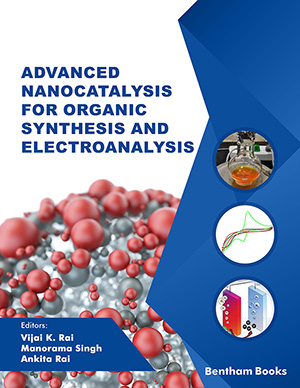
Abstract
Ether glycerophospholipids (GPLs) are a subclass of phospholipids, chemically characterized by the existence of an ether bond within the lipid molecules. Because ether GPLs are membrane structure components, they act as the wide-like resistance to membrane oxidation induced by chemical hypoxia and reactive oxygen species. The abnormal biosynthesis of ether GPLs in humans leads to the decreased supply of the critical lipids to various human cells, resulting in the alteration of the membrane lipid composition. Recent studies demonstrated that the level of docosahexaenoic acid (DHA) – containing ether molecular species of phosphatidylethanolamine (PE) and phosphatidylcholine (PC) in the Alzheimer’s brain significantly decreased. On the other hand, the deficiency of DHA and plateletactivating factor in human sperm causes infertility in men. We propose that the supplementation of DHA ether molecular species of GPLs may prevent and treat brain disorders, such as Alzheimer’s disease and autism, and infertility. The present review describes (1) procedures for the semi–synthesis of DHA – containing ether molecular species of PC and PE; (2) mass spectrometric methods for structurally identifying the lipids; (3) potential of DHA plasmanycholine species as lipid drugs for preventing and treating brain diseases and infertility; and (4) recommendation of marine oysters, monkfish liver and scallops based seafoods as DHA ether GPLs supplementation for the medical application.
Keywords: Ether glycerophospholipids, docosahexaenoic acid, molecular nutrition, Alzheimer’s disease, autism, infertility.
Current Organic Chemistry
Title:Ether Glycerophospholipids and Their Potential as Therapeutic Agents
Volume: 17 Issue: 8
Author(s): Su Chen and Chengchu Liu
Affiliation:
Keywords: Ether glycerophospholipids, docosahexaenoic acid, molecular nutrition, Alzheimer’s disease, autism, infertility.
Abstract: Ether glycerophospholipids (GPLs) are a subclass of phospholipids, chemically characterized by the existence of an ether bond within the lipid molecules. Because ether GPLs are membrane structure components, they act as the wide-like resistance to membrane oxidation induced by chemical hypoxia and reactive oxygen species. The abnormal biosynthesis of ether GPLs in humans leads to the decreased supply of the critical lipids to various human cells, resulting in the alteration of the membrane lipid composition. Recent studies demonstrated that the level of docosahexaenoic acid (DHA) – containing ether molecular species of phosphatidylethanolamine (PE) and phosphatidylcholine (PC) in the Alzheimer’s brain significantly decreased. On the other hand, the deficiency of DHA and plateletactivating factor in human sperm causes infertility in men. We propose that the supplementation of DHA ether molecular species of GPLs may prevent and treat brain disorders, such as Alzheimer’s disease and autism, and infertility. The present review describes (1) procedures for the semi–synthesis of DHA – containing ether molecular species of PC and PE; (2) mass spectrometric methods for structurally identifying the lipids; (3) potential of DHA plasmanycholine species as lipid drugs for preventing and treating brain diseases and infertility; and (4) recommendation of marine oysters, monkfish liver and scallops based seafoods as DHA ether GPLs supplementation for the medical application.
Export Options
About this article
Cite this article as:
Chen Su and Liu Chengchu, Ether Glycerophospholipids and Their Potential as Therapeutic Agents, Current Organic Chemistry 2013; 17 (8) . https://dx.doi.org/10.2174/1385272811317080006
| DOI https://dx.doi.org/10.2174/1385272811317080006 |
Print ISSN 1385-2728 |
| Publisher Name Bentham Science Publisher |
Online ISSN 1875-5348 |
Call for Papers in Thematic Issues
Catalytic C-H bond activation as a tool for functionalization of heterocycles
The major topic is the functionalization of heterocycles through catalyzed C-H bond activation. The strategies based on C-H activation not only provide straightforward formation of C-C or C-X bonds but, more importantly, allow for the avoidance of pre-functionalization of one or two of the cross-coupling partners. The beneficial impact of ...read more
Electrochemical C-X bond formation
Conventional methods for carrying out carbon–X bond formation are typically conducted at harsh reaction conditions, and rely on expensive catalysts as well as the use of stoichiometric, and perhaps toxic, oxidants. In this regard, electrochemical synthesis has recently been recognized as a sustainable and scalable strategy for the construction of ...read more
From Lab Bench to Algorithm: The Future of Organic Chemistry Powered by AI
Organic chemistry, with its intricate dance of molecules and reactions, is undergoing a transformation fuelled by the power of Artificial Intelligence (AI) and Machine Learning (ML). The integration of AI/ML with Organic Chemistry is revolutionizing the field by enhancing the efficiency and accuracy of chemical research and development. These technologies ...read more
N-Heterocyclics: Synthesis, Computational Studies, and Coordination Chemistry - A synthetic perspective
N-heterocycles, such as phenanthroline, quinoline, or their organometallic complexes, are widely used in a variety of fields, including chemistry, biochemistry, and coordination chemistry. They play a key role in many chemical and biological processes as biological ligands, medicinal agents, catalysts in organic synthesis, molecular probes and sensors, as well as ...read more
Related Journals
 26
26
- Author Guidelines
- Graphical Abstracts
- Fabricating and Stating False Information
- Research Misconduct
- Post Publication Discussions and Corrections
- Publishing Ethics and Rectitude
- Increase Visibility of Your Article
- Archiving Policies
- Peer Review Workflow
- Order Your Article Before Print
- Promote Your Article
- Manuscript Transfer Facility
- Editorial Policies
- Allegations from Whistleblowers
- Announcements
Related Articles
-
Recent Developments in Computer Aided Diagnosis for Lung Nodule Detection from CT images: A Review
Current Medical Imaging RNA Interference as a Tool for Alzheimers Disease Therapy
Mini-Reviews in Medicinal Chemistry Detour Cum Distance Matrix Based Topological Descriptors for QSAR/QSPR Part-II: Application in Drug Discovery Process
Letters in Drug Design & Discovery Education, APOE ε4, and Cognition in Individuals with Subjective Cognitive Decline with Worry in the SILCODE Study
Current Alzheimer Research Tissular Senescence and Modifications of Oral Ecosystem in the Elderly: Risk Factors for Mucosal Pathologies
Current Aging Science Nose to Brain Drug Delivery System: A Comprehensive Review
Drug Delivery Letters Non-steroidal Anti-inflammatory Drugs as Candidates for the Prevention or Treatment of Alzheimer’s Disease: Do they Still Have a Role?
Current Alzheimer Research Glaucoma and Alzheimer Disease: One Age-Related Neurodegenerative Disease of the Brain
Current Neuropharmacology Molecular Mechanisms of Thiamine Utilization.
Current Molecular Medicine Editorial (Thematic Issue: The Crosstalk between Non-Pharmaceutical and Pharmaceutical Approaches to Prevention and Treatment of Chronic Diseases: Current Concepts and Perspectives)
Current Pharmaceutical Design Thiazolidin-4-one Derivatives as Central Nervous System Potential Agents
Central Nervous System Agents in Medicinal Chemistry Arsenic Exposure and Amyloid Precursor Protein Processing: A Focus on Alzheimer's Disease
Current Molecular Pharmacology Platelets and Atherothrombosis: Causes, Targets and Treatments for Thrombosis
Current Medicinal Chemistry Safety and Efficacy of Duloxetine in the Treatment of Diabetic Peripheral Neuropathic Pain in Older Patients
Current Drug Safety Alzheimer’s Disease Targeted Nano-Based Drug Delivery Systems
Current Drug Targets Behavioural Variant Frontotemporal Dementia due to <i>CCNF</i> Gene Mutation: A Case Report
Current Alzheimer Research The Chemistry and Pharmacology of Genistein
The Natural Products Journal Cell Microencapsulation Implants into the Central Nervous System
Recent Patents on Nanomedicine Meet the Editorial Board
Current Alzheimer Research COX-2: Friend or Foe?
Current Pharmaceutical Design





















